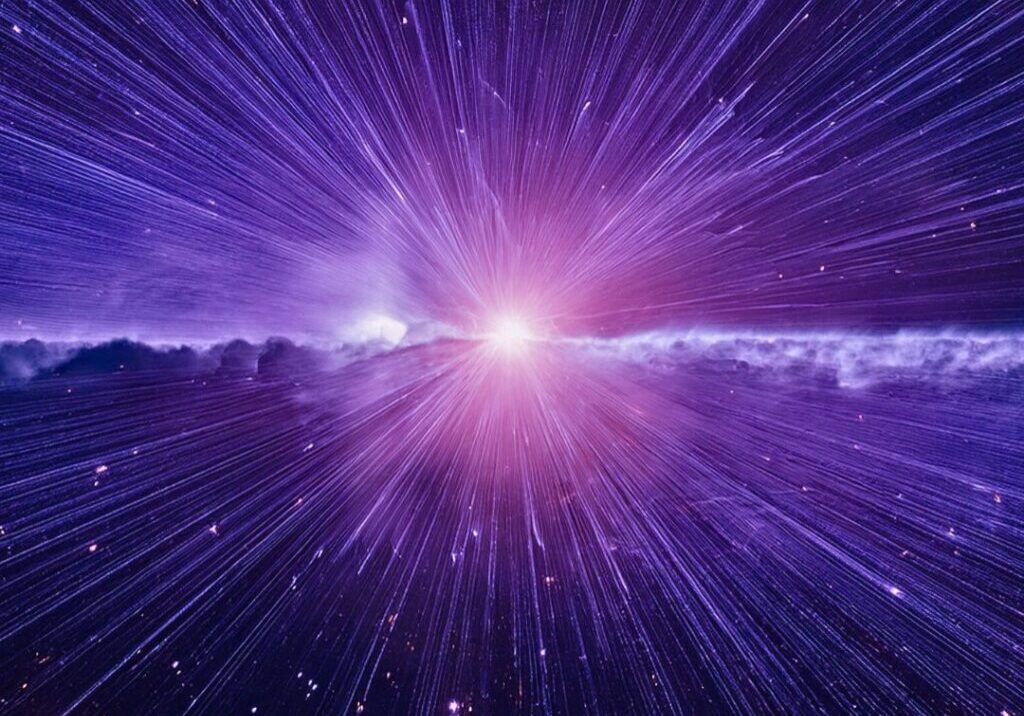Teilhard de chardin: a big thinker for a big universe
The great medievalist scholar Etienne Gilson once wrote of Bonaventure:
“You can either see the general economy of his doctrine in its totality, or see none of it, nor would a historian be led by the understanding of one of the fragments to desire to understand the whole, for the fragments are quite literally meaningless by themselves, since each part reaches out into all the rest of the system and is affected by the ramifications leading to it from the synthesis as a whole” (The Philosophy of St. Bonaventure, p. 436).
What Gilson wrote of Bonaventure could also be said of Pierre Teilhard de Chardin, S.J. who saw himself in the lineage of the Greek Fathers of the early Church. Teilhard was such a broad, integrated thinker that you either see the economy of the whole of his thought or none of it. Like the early Greek Fathers, he developed a cosmic Christology based on natural philosophy (science), Scripture (especially the writings of St. Paul) and faith in Jesus Christ. His theological vision emerged out of a deep, prayerful reflection on the dynamic relationship of God and world with an understanding of evolution beyond Darwinian natural selection. According to Teilhard, evolution and creation, cosmos and the history of salvation are not contrasts but complementary aspects of the one process of reality. Within his “Weltanschauung” three levels of perception may be distinguished: physics or phenomenology, metaphysics or hyperphysics, and mysticism. The object of perception, for Teilhard, is always the entire reality. He thought of the cosmic Christ like a tapestry of divine love incarnate unfolding across the vast dynamic expanse of evolution. To grasp his ideas one must follow the threads of his tapestry as they begin in the integrated union of faith and science.
There are some scholars today who cannot see Teilhard’s big picture and maintain instead that he was a proponent of eugenics and Nazism. In their view Teilhard’s seemingly anthropocentric ideas belie a flourishing earth community because he paints the human person as a superior to all other aspects of biological life. Nothing could be further from the truth. Teilhard was not thinking in terms of Sally or Sam but the underlying principles that could bring Sally and Sam together. His system of thought is more like the grand plan of a great cosmic cathedral rather than what kind of stones should be used or where to get the cement. To understand Teilhard is to think in big and broad terms because he was trying to bring into a new single focus the dynamic presence of God in an expanding universe. Al Gore expressed appreciation of Teilhard in his book Earth in the Balance where he said that Teilhard helps us understand the importance of faith in the future. “Armed with such faith,” Gore writes, “we might find it possible to resanctify the earth, identify it as God’s creation, and accept our responsibility to protect and defend it.”
Teilhard’s brilliant insights were born out of a sharp scientific mind and a deep Ignatian spirit. He was first and foremost a scientist and he wrote about theological matters as a scientist not as a trained theologian. In his words: “I never leave for an instant the realm of scientific observation.” Profoundly misunderstood and labeled by critics as a charlatan, Teilhard realized that the real path to truth must begin with concrete reality. He wrote his opus, The Phenomenon of Man, not as a work of metaphysics, still less as a theological essay, but simply as a scientific treatise. Yet, anyone familiar with modern science would find his talk of an imperceptible psychic “within” of matter or spiritual energy or a teleologically directed evolution as scientifically suspect. Teilhard was well-aware of such suspicions and genuine perplexity as to his methods; he encountered them and wrestled with them all his life long. Elizabeth Sewell noted in her book, The Human Metaphor, that Teilhard’s greatest contribution may be methodological. What Teilhard contributes is a renewed scientific methodology that connects science with logos, cosmos and eros, in a way that impacts the whole psycho-social order and the course of evolution.
It is precisely his renewed scientific methodology or his approach to a “science charged with faith” that enabled Teilhard to see a new role for religion in view of evolution. His insights on consciousness and the “withinness” of matter seemed far-fetched in his day and yet quantum physics is beginning to realize the “hard problem of matter,” namely, that one cannot think of matter apart from consciousness; that is, consciousness is fundamental to matter. Teilhard took his insights one step further by indicating that if consciousness is fundamental to matter, then religion is fundamental to evolution because religion is transcendent energy that gives form to the free energy of the earth. In his essay “How I Believe” he indicates that most people think of religion as a “strictly personal matter.” However, he rejected this view from an evolutionary perspective: “To my mind, the religious phenomenon, taken as a whole, is simply the reaction of the universe as such, of collective consciousness and human action in process of development.” He goes on to say that, at the social level, religion expresses faith in the whole, manifested in individual thought or self-consciousness. If we are to progress or evolve, we must release ourselves from religious individualism and confront the general religious experience, which is cosmic and evolutionary, and involve ourselves in it. The purpose of religion is to enkindle a zest for life.
Although he saw himself as a scientist, Teilhard also realized the need for a new philosophy and metaphysics, new structural principles that could support the integration of faith and evolution. He worked to develop a philosophy of love based on the dynamics of evolution using a phenomenological method of experience. One can follow his connections between love as a force of attraction and the complexification of matter in evolution. His insights on love as the prime energy of the universe, following the law of complexity-consciousness, are woven throughout his writings and provide a metaphysical basis to his personalizing universe. “The physical structure of the universe is love,” he wrote. It is in the framework of a love-centered universe that one must consider his comments on science, eugenics, and the socio-political movements of communism and fascism. While he rejected the destruction of these movements, he was fascinated by the capacity of humans to coalesce into a unified system of power. He wondered why Christianity could not tap into the same power of unification so that the whole evolutionary flow of biological life could be drawn into greater unity. Teilhard’s insights were always within the wider scope of evolution as cosmic personalization, that is, convergence of the multiple into a greater center of unity with a corresponding rise in consciousness.
While Teilhard was a trained paleontologist, he did not agree with Darwin’s theory of evolution. In his view, Darwinian evolution did not adequately account for novelty and transcendence in nature. He felt that the ‘phenomenon of evolution’ is “something very different from and more than a mere genesis of animal species.” Does this mean that he disregarded animals? Absolutely not. Rather he saw the emergence of different species within a larger flow of cosmic and biological life. He was inspired by the French philosopher Henri Bergson and his notion of creative evolution. Bergson posited an “elan vital” or a vital impulse in nature, which led Teilhard to develop his concept of Omega. God is in the midst of the whole shebang. Again, to posit a supernatural presence at the heart of nature departs from classical Darwinian evolution and thus to interpret Teilhard through a Darwinian lens is to miss out on his cosmotheandric architectonics.
Teilhard was quite critical of the “wooden scholasticism” of his age and saw a church entrenched in legalism and dogmatism. He worked tirelessly toward a new theological vision consonant with evolution. He witnessed the mass movements of communism and national socialism as perversions of evolution’s urge toward greater consciousness and convergence. But he also saw that they represented the capacity to coalesce, to aggregate into a more unified power. Nothing should deter us from realizing cosmic personalization or movement towards the fullness of Christ, he indicated: “Eppur si muove!”
Teilhard died a lonely man in New York City on April 10, 1955. Misunderstood, rejected by the Church and silenced by his superiors, he worked until the very end. He believed that a new synthesis of science and religion could give rise to a new religion of the earth, one that would kindle faith in the world, faith in God and faith in the future. He lived in this unwavering hope. May we do the same.
 View print-friendly version
View print-friendly version
6 Comments
Related Posts

The Earth Groans, AI Grows: Who Guides the Flame?
In this critical moment of planetary history, where ecosystems collapse, artificial intelligence proliferates, and human meaning trembles on the edge of uncertainty, we are faced with a profound question: What kind…


I just today (11/20/222) discovered the article by Ilia Delio, and I am so grateful for her insight. I have been studying the ideas of Teilhard de Chardin for quite some time. What is so inspiring in his work is the apparent confluence of science and religion, as seen in so many publications among today’s scholars and scientists. Also, his concept of “the vast sweep of evolution” shows the importance of including this concept in our educational systems.
A Very common sentiment among many people these days, especially younger people, is that they identify as being “spiritual but not religious.”
I am wondering how Teilhard Would tackle / unpack / embrace the differences between the words of spiritual, religious, and organized religion if he were revisiting his efforts today?
For those who wonder how Teilhard De Chardin may have addressed the differences between the words of spiritual, religious and organized religion; read his book: “The Divine Milieu: An Essay on the Interior Life.
I’ve been pondering this blog. As Ilia shares the reductionist resistance to Teilhard, I wonder if the tension lies in our true capacity to intuit the unity of his complexity consciousness. His beautiful, brilliant, hungry mind and absolute servant heart opened him as a vehicle of God’s manifestation that to be accepted, required a readiness in both the field of science and the Church. As a mystic he knew the Truth of what he was writing, he “saw” the systems of unity and experienced the Love of the collectiveness of this Unity.
What we can celebrate is that even in his denial of acceptance he had the courage and conviction to keep writing. His dark nights had to be long and incredibly difficult. Rejection and loneliness in ones field has to be so painful. Something tells me he knew to welcome this also. Yes, may we be grateful, hopeful and courages. Thank you for helping us see Pierre Teilhard de Chardin in his deep humanity.
I cannot express how excited I am about the Omega Center and my understanding of its vision to actually engage in what Teilhard seemed to describe as his hope and vision through his writings. Ilia Delio’s exuberance is only matched by her intellectual and intuitive tour de force, and her humorous excitement is as contagious as it is authentic. This is inspiring and challenging all at the same time. Personally (in the Teilhard sense of ‘person’), there is no turning back. Into the Future!
How inspiring to hear the message in this article that so resonates with my view of life and God. I view God as the Divine Intelligence that is at the very heart and Source of all life. As He conducts the Symphony of Life I see Him as the Source, not as on observer. With His Divine Guidance we are all evolving in body mind and spiritually as He leads us forth. I love reading these types of articles and all of Sr. Delio’s books. Each time I read such articles I feel like a window gets opened in my mind and a fresh breeze blows through my brain empowering it to expand and broaden my view of life and God. Thanks for all you do to broaden our view.